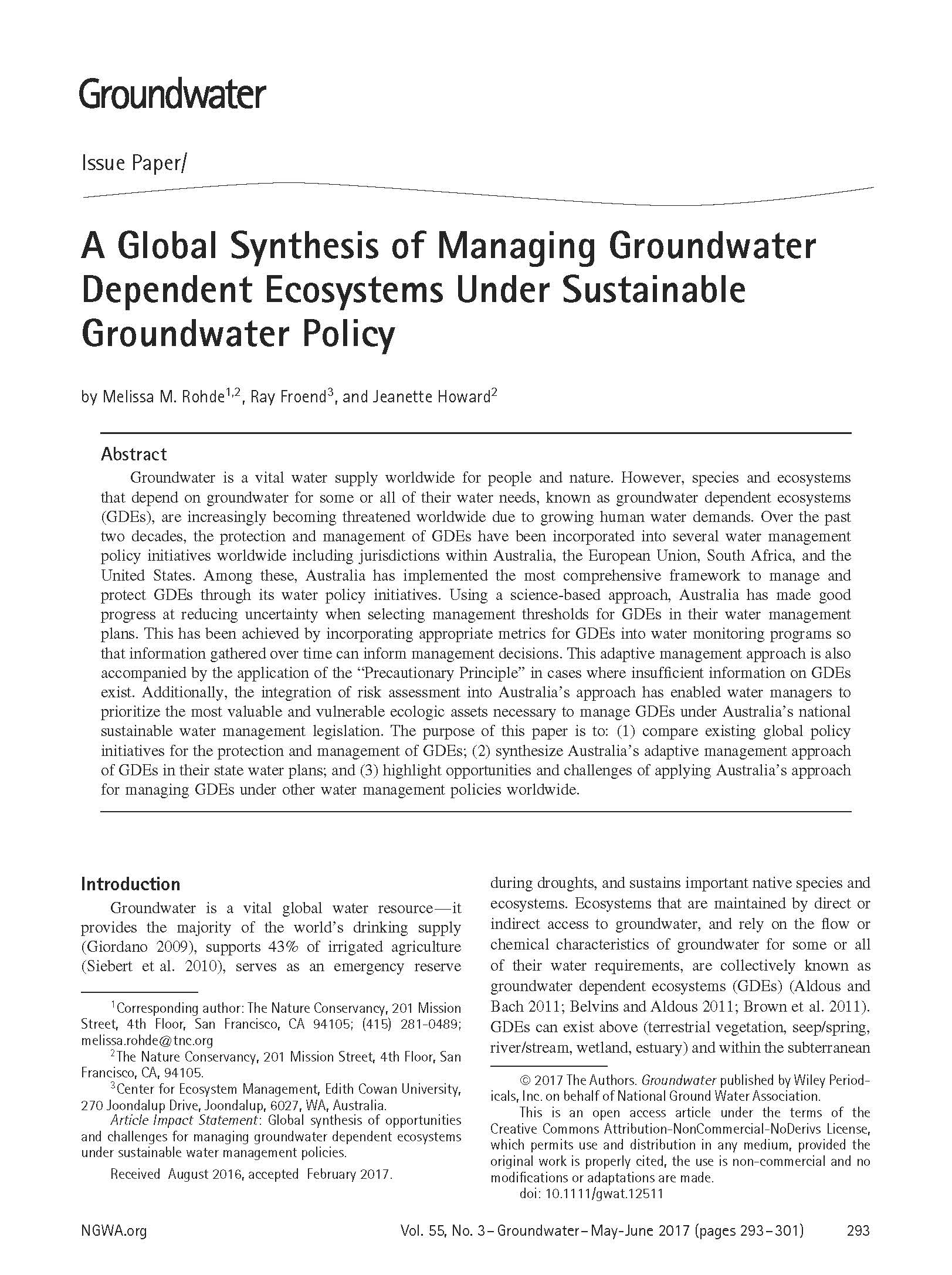Groundwater is a vital water supply for people and nature. However, species and ecosystems are increasingly threatened worldwide due to rising human water demands. Droughts and unsustainable pumping practices have, in some areas, lowered groundwater levels causing undesirable results to these groundwater dependent ecosystems (GDEs), which may either rely on groundwater for some or all of their water needs. GDEs can be found in the form of a wetland, river/stream, terrestrial landscape, or spring/seep. This large diversity makes it difficult to provide a one-size-fits-all management solution since each GDE has different ecological water requirements, contains different species, fosters specific habitat conditions, and can face a variety of threats from groundwater basin activities (see link below for more info). Despite these challenges, GDEs are receiving increasing attention worldwide through the development of water management policy initiatives.
Higher demands on groundwater due to climate change and anthropogenic impacts are exceeding natural rates of groundwater renewal - causing problems for groundwater dependent ecosystems. Source: groundwatercalifornia.org
Over the past two decades, the protection and management of GDEs have been incorporated into several water management policy initiatives worldwide including jurisdictions within Australia, the European Union, South Africa, and the United States. Recently, a paper I wrote with my colleagues Ray Froend (Edith Cowan University) and Jeanette Howard (The Nature Conservancy) titled "A Global Synthesis of Managing Groundwater Dependent Ecosystems Under Sustainable Groundwater Policy" was published in Groundwater. This paper provides an overview of how GDEs have been incorporated into water management policy initiatives existing worldwide and highlights the opportunities and challenges of replicating these efforts elsewhere. In our paper, we highlight Australia's management of GDEs as a good blueprint as it has implemented the most comprehensive framework to manage and protect GDEs under its sustainable water policy.
In thinking about how to replicate what has worked in practice to other places, our paper explains how Australia's adaptive management framework is a key step towards achieving sustainable water management policy. Their adaptive management framework relies upon scientific data and research collected in monitoring programs to inform management decisions. This approach is very practical given the knowledge gaps and uncertainties that are bound to exist around GDEs during the early management years. Australia's integration of risk assessments and the "precautionary principle" into an adaptive management framework provides an example of how water managers can prioritize resources, reduce risk, and avoid adverse impacts despite uncertainties.
The Australian case also illustrates the importance of developing a common management framework in conjunction with the legislative language of water policy that can leverage best available science and regional datasets. This top down approach ensures that implementers of the legislation receive the necessary technical guidance and support to manage GDEs so that GDEs can be successfully managed from the bottom up. Adoption of a common approach across jurisdictional boundaries also helps to facilitate transparency, accountability, and knowledge sharing opportunities. Such guidance is mutually beneficial for central agencies and water managers as it helps to reduce costs, streamline the review process, and promote overall success of sustainable water management legislation.
If you'd like to learn more about this topic, I'll be convening a session titled: "Putting Policy into Practice: Achieving Sustainable Groundwater Management for People and Nature" on Monday, August 7 at 10:15-11:30 am at the 2017 Ecological Society of America Annual Meeting in Portland. This session will feature an expert panel comprised of Ray Froend, Allison Aldous (The Nature Conservancy of Oregon), and John Stella (SUNY). The panelists will introduce existing conceptual frameworks and methodologies being used to manage ecosystems within the context of water management. The session will also involve a discussion on the research opportunities around addressing measurable outputs and thresholds for GDEs. Hope to see you there!



